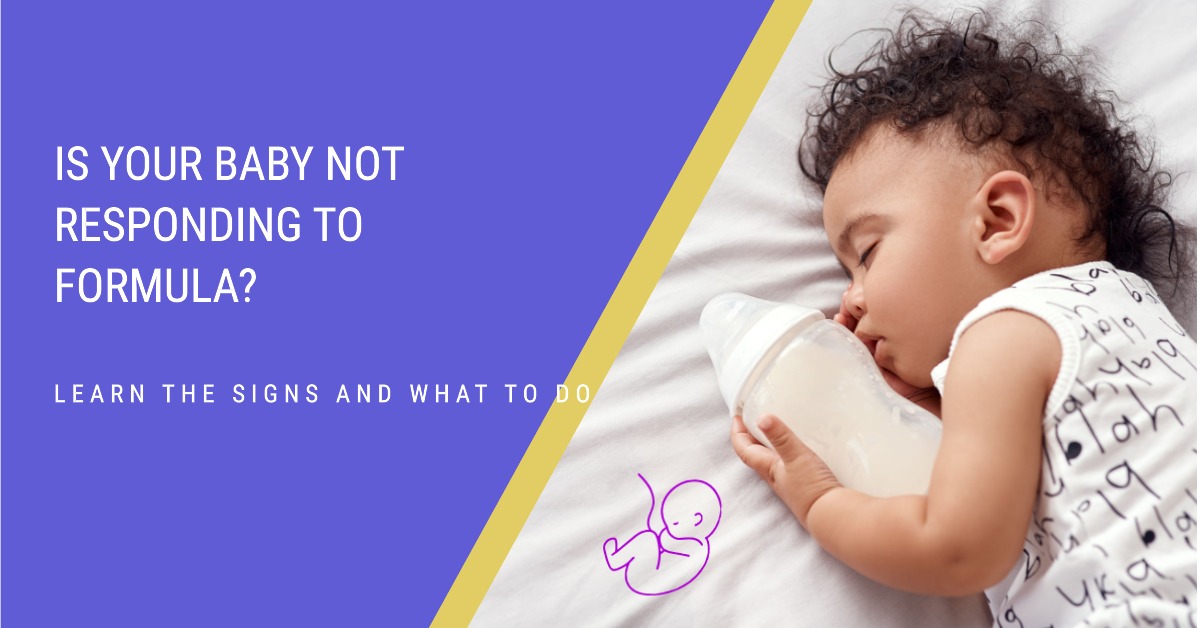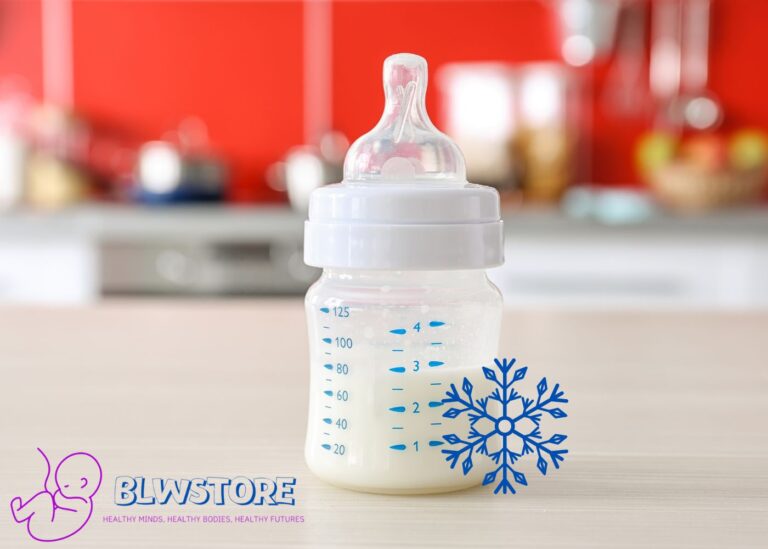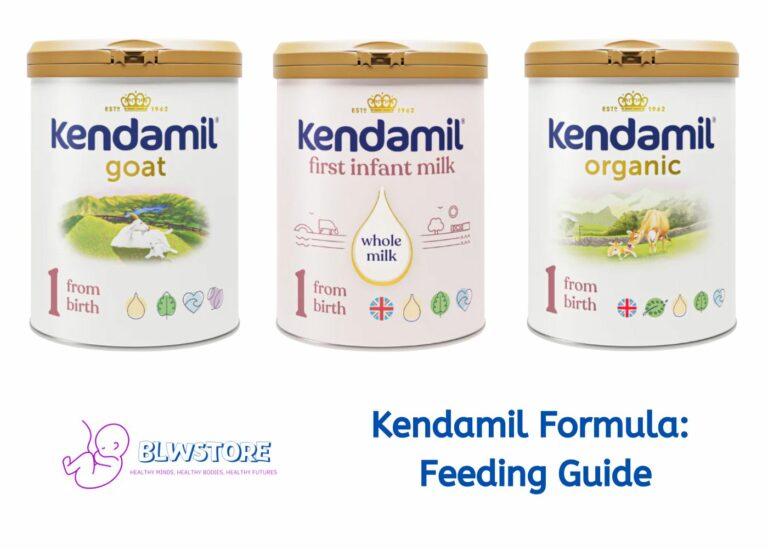
Key Takeaways
Identifying the right baby formula can feel like a puzzle. Signs of formula intolerance include frequent spitting up, gassiness, diarrhea, excessive fussiness, gas, trouble sleeping, and rashes.
Educating yourself on different types of formula (cow’s milk, goat’s milk, soy, partially hydrolyzed, extensively hydrolyzed, and amino-acid) can provide different options for your baby.
Always consult with a pediatrician or a healthcare professional before making changes to your baby’s diet.
If your baby disagrees with their current formula, gradually switch to a different type. Monitor your baby’s behavior, and always contact a healthcare professional if any concerning signs appear.
Be patient! It can take up to 2 weeks for a baby to get used to their new formula. Patience and flexibility are crucial when searching for the best formula that suits your baby.
Identifying whether or not your baby’s formula is a good fit can sometimes feel like solving a complex puzzle.
Did you know that common signs of formula intolerance include frequent spitting up and gassiness after feeding?
This blog will serve as your guide, providing essential insights into the symptoms to look for and how to adapt if a formula change is necessary.
*Related: Baby Formula Allergies
Our Short Answer
Our son Pablo had trouble digesting cow’s milk formula. At the time, although we were nutritionists, we didn’t know much about formulas until a pediatrician friend told us to try goat’s milk formula before we went to a hypoallergenic one.
Since we switched, Pablo has had no problems at all.
As parents, it is normal to worry at the first change, but you have to know how to stay calm and try options until you find the right one.
If you notice that your baby is not tolerating his current formula, this is the order we would follow:
1. Cow’s milk formula
2. Goat’s milk formula
3. Soy formula
4. Partially Hydrolyzed formula
5. Extensively hydrolyzed formula
6. Amino-acid formulaThat said, your best bet is always to talk to a pediatrician, but if you can’t, that’s the order we would follow until we find a formula that works.
Remember that it can take up to 2 weeks for a baby to get used to their new formula, although, as a general rule, it is much faster.
Be patient!
What are the signs that formula isn’t agreeing with your baby?
Persistent diarrhea, excessive fussiness, gas, trouble sleeping, and rashes can be signs of formula intolerance or sensitivity.
Monitor your baby closely and consult a healthcare professional if these symptoms persist.
Diarrhea
Persistent diarrhea is a clear sign that your baby’s formula may not agree with them.
While occasional loose stools can be normal for infants, frequent episodes could indicate a problem with formula intake.
Diarrhea in babies appears watery, sometimes explosive, bowel movements and can lead to dehydration if it persists. Monitoring your little one closely for this symptom is crucial because it might mean their body isn’t absorbing nutrients correctly from their current formula.
Diarrhea could also suggest an intolerance or allergic reaction to formula components such as lactose or cow’s milk protein.
Excessive fussiness

If your little one seems cranky, irritable, and inconsolable more often than usual, it could be a red flag that their current formula isn’t suiting them well.
This fussiness can occur immediately after feeding or persist throughout the day.
Excessive fussiness can be caused by various factors related to formula intolerance or sensitivity.
Also, some babies may struggle to digest lactose or other components in regular cow’s milk-based formulas.
If you notice excessive fussiness in your baby, it may be worth switching to a different formula better suited for their needs.
Always consult with a healthcare professional.
Gas
If your little one is experiencing excessive gas after feedings, it may indicate that their current formula is causing discomfort.
This can make your baby fussy and irritable, making it difficult for them to settle down or sleep properly.
Gas can also lead to bloating and discomfort in the tummy.
Trouble sleeping
Difficulty falling asleep or staying asleep could be a result of discomfort caused by the formula they are consuming.
Formula intolerance can lead to digestive issues, such as gas and stomach pain, which can disrupt your baby’s sleep patterns.
Rash

Rashes can appear as red, inflamed patches on your baby’s skin and may be accompanied by itching or discomfort.
These rashes can develop anywhere on the body but are most commonly seen around the mouth, chin, cheeks, and diaper area.
It’s important to note that not all rashes are caused by formula intolerance, as other underlying factors could be at play.
However, if you notice a persistent rash coinciding with feeding times or shortly after your baby consumes formula, it could indicate an adverse reaction.
How to Determine Which Formula is Right for Your Baby
Always read the formula ingredients and their sources. Consider your baby’s age, dietary needs, and allergies or sensitivities.
Monitor your baby’s reaction.
1. Consulting with a healthcare professional
The first step is always to talk to a pediatrician if possible, as he or she will be able to determine if your baby’s symptoms are related to an intolerance or allergy, and can recommend the type of formula that best suits your baby’s specific needs.
2. Trying different types of formula (cow’s milk, soy, hypoallergenic)
Cow’s milk-based formula: This is the most common type of formula. It’s generally well-tolerated as it contains cow’s milk protein modified for easier digestion.
Goat’s milk-based formula: A good alternative for babies who have trouble with cow’s milk or soy. It’s typically easier to digest and less likely to cause allergies. *Read: Goat vs Cow Milk Formula
Soy-based formula: A great alternative if your baby is lactose intolerant or has a milk allergy. Made from soy protein, it’s lactose-free. *Read: Soy in Baby Formula
Hypoallergenic formula: Ideal for babies with allergies or sensitivities to certain proteins. These formulas contain proteins broken down into smaller, more digestible pieces. *Read: Best Hypoallergenic Formulas
Extensively hydrolyzed formula: Recommended for babies with severe allergies or intolerances to cow’s milk or soy protein. It has proteins extensively broken down to reduce allergy risk. *Read: Hydrolyzed Formulas | Partially Hydrolyzed vs Extensively Hydrolyzed Formulas
How to Safely Switch to a Different Formula
Switching formulas is quite simple; you do not need to complicate it.
Gradual Transition: Add small amounts of the new formula to the old one, slowly increasing the quantity daily.
Monitor Your Baby’s Response: Look out for changes in your baby’s behavior, such as altered bowel movements, increased fussiness, or disrupted sleep patterns.
Consult a Healthcare Professional: If you notice any concerning signs, contact your healthcare provider for advice.
Patience and Flexibility: Every baby is unique. What suits one may not be suitable for another, so you might need to try a few formulas before finding the one that suits your baby best.
FAQs
1. What are the signs that formula doesn’t agree with my baby?
Signs that formula may not agree with your baby include excessive gas, fussiness, vomiting or spitting up after feedings, diarrhea or constipation, and a rash or skin irritation.
2. How long should I wait to see if a formula agrees with my baby?
It is recommended to give a new formula at least two weeks before determining if it agrees with your baby. This allows time for their digestive system to adjust and for any initial discomfort to subside.
3. What can I do if my baby doesn’t tolerate their current formula?
If your baby does not tolerate their current formula, you can try switching to a different brand or formula specifically formulated for sensitive stomachs or allergies. It is best to consult with your pediatrician before making any changes.
If you can’t, try switching to a unique formula that helps with those issues.
Last Words
Our last piece of advice is to be patient.
We had the same problem with our son Pablo, and when we switched to a goat milk formula, his digestive problems disappeared.
As a parent, you have to be ready to pivot and also be ready to learn as much as you can so you are a bit more prepared for the journey ahead.
We’re Maria and Alberto, a married couple and educators who are nutrition enthusiasts. Even before we had kids, we were already crazy about nutrition.
We’d read scientific articles, watch videos from nutritionists, and spend hours listening to nutrition podcasts.
Today, we continue doing this, but in a different way, as we’ve learned to sift through the noise and trends. Nutrition, like any other field of knowledge, the more you read and learn, the more you develop a comprehensive understanding of reality, and that’s what has happened to us.
Before having our first child, we focused on learning everything we could about child nutrition, using the same techniques we had already employed, backed by our extensive knowledge in nutrition.
Our mission is to help other parents with their children’s nutrition, to help them become the best versions of themselves.
If we are what we eat and drink, which is absolutely true, let’s do it right!







